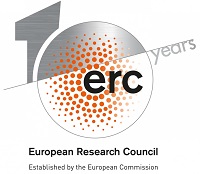The aetiology of Alzheimer's disease is linked to the aggregation of the amyloid-beta (Ab) peptide, which is the central process of the "amyloid cascade". The intervention of Cu and Zn ions in the amyloid cascade is widely acknowledged and directly linked to the consequences of their coordination to the Ab peptide. Indeed Cu and Zn can modulate the Ab aggregation and Cu can catalyze the production of Reactive Oxygen Species (ROS) from dioxygen and ascorbate, an highly concentrated physiological reductant. This will be first described and commented on. While the role of both ions in the Ab aggregation process is still controversial, the higher toxicity of the redox competent Cu ions (compared to the redox inert Zn ions) in ROS production is acknowledged.2 Thus we have considered that the Cu ions are the main therapeutic target. Several therapeutic strategies will be illustrated.


